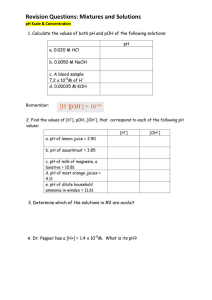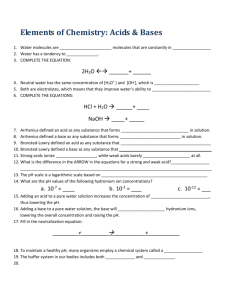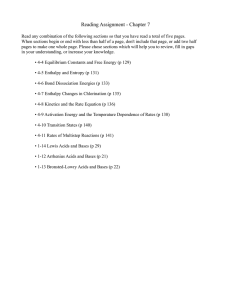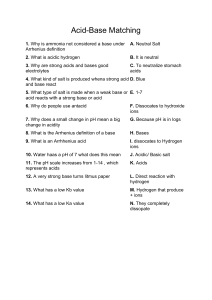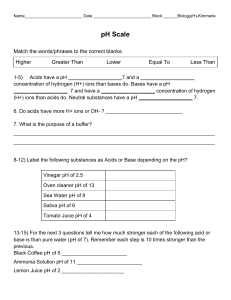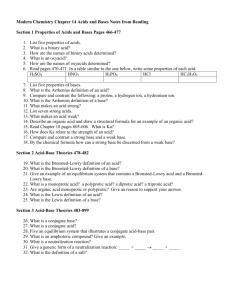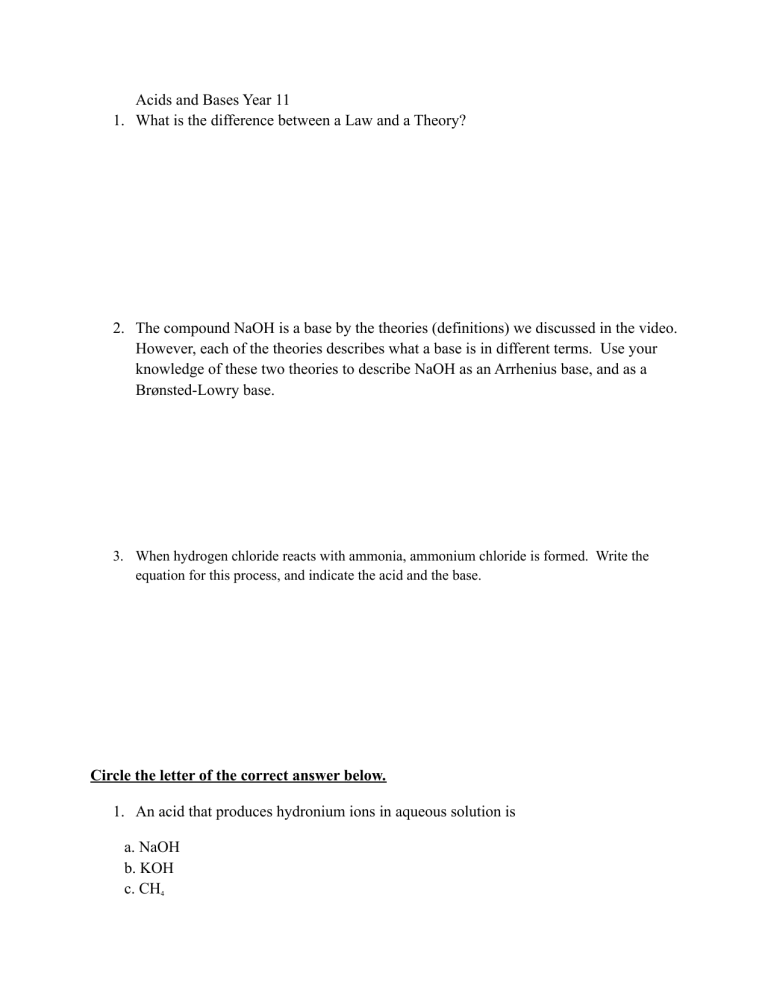
Acids and Bases Year 11 1. What is the difference between a Law and a Theory? 2. The compound NaOH is a base by the theories (definitions) we discussed in the video. However, each of the theories describes what a base is in different terms. Use your knowledge of these two theories to describe NaOH as an Arrhenius base, and as a Brønsted-Lowry base. 3. When hydrogen chloride reacts with ammonia, ammonium chloride is formed. Write the equation for this process, and indicate the acid and the base. Circle the letter of the correct answer below. 1. An acid that produces hydronium ions in aqueous solution is a. NaOH b. KOH c. CH4 d. H2SO4 2. The reaction of a base with an acid to form a salt and water is termed a. hydrolysis b. emulsification c. electrolysis d. neutralization 3. The compound in the following group that is NOT a salt is a. (NH4) 2 b. Ba(NO3)2 c. MgSO4 d. NaCl 4. According to the _______________ theory, acids are proton donors. a. Bronsted-Lowry b. Arrhenius 5. Which of the following is sulfuric acid? a. KCI b. NaCl c. H2SO4 D. Na2CO3 6. For each of the following theories, write A=Arrhenius, B-L= Bronsted-Lowry Acids are proton donors______ Bases when put in water dissociate to form hydroxide ions______ Sulfuric acid is a diprotic acid (releases 2 H ions)_______ Bases are proton acceptors _________ Acids dissociate to form hydrogen ions when puts in water ________
